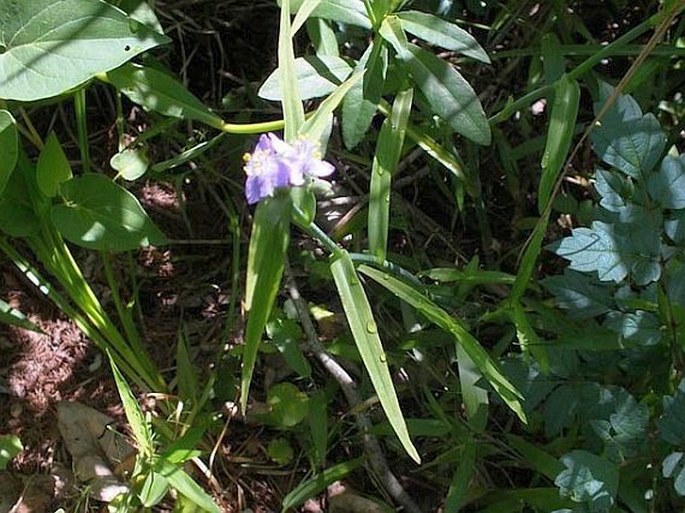Syn.: Tradescantia speciosa Salisb., Tradescantia brevicaulis Raf., Tradescantia rupestris Raf., Ephemerum congestum Moench, Tradescantia congesta (Moench) D. Don
Family: Commelinaceae R. Br.

Distribution: North American species found in the east of US with the western limit from Minnesota to Louisiana, also found in southern Ontario in Canada and introduced to California.
Ecology: Open woods, shrubbery, fields, roadsides and disturbed land. Blooms from March to July.
Description: Perennial herb, stems erect or ascending, from thick, fleshy roots, 2–4 mm thick. Stems 5–35 cm long, internodes glabrous or occasionally sparsely hairy, sometimes rooting at nodes. Leaves spirally arranged, sessile, linear-lanceolate, flat or keeled, 0.5–2.5 cm, apex acuminate, glabrous or occasionally with soft hairs, 2–5 per stem. Inflorescence terminal or rarely axillary, leaf-like bracts, sparsely to densely woolly. Flowers in tight clusters, about 2 cm across, with pedicels, 1.2–3.5 cm long, flowers ephemeral, sometimes lasting only half a day, petals distinct, blue to purple, occasionally rose or white, broadly ovate, stamens free, erect, filaments bearded, anthers yellow, double spoon-like. Fruit is a capsule, 4–7 mm; seeds 2–3 mm.
Note: The genus is named after John Tradescant (1608–62) who served as gardener to Charles I, king of England.


These images were taken in USA, Louisiana, Jean Lafitte NP, Barataria Preserve (May 2014).


